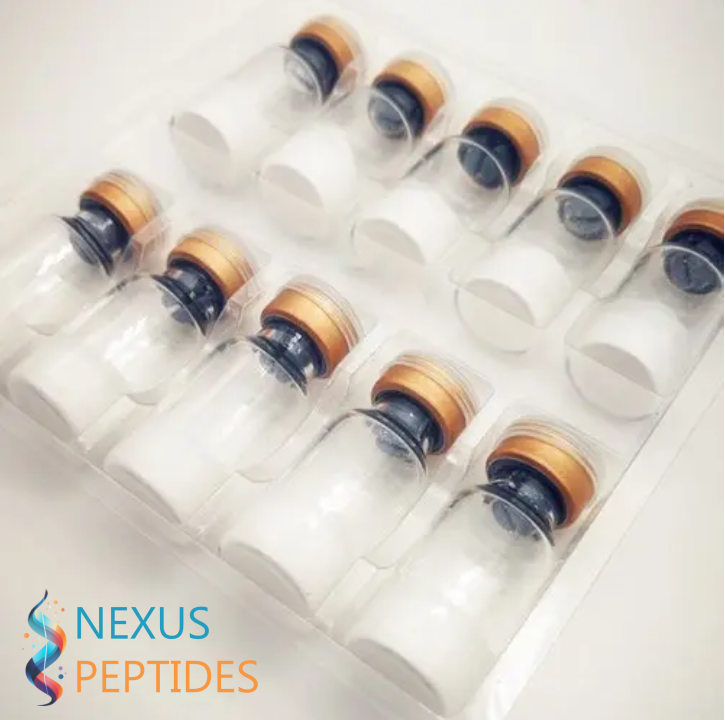

Product Description: BPC-157 + TB-500 Blend (1:1 Ratio)
Introduction:
BPC-157 and TB-500 are peptides commonly utilized in various research fields due to their distinct properties. Our high-quality BPC-157 and TB-500 blend in a 1:1 ratio provides researchers with an effective way to explore the potential combined effects of these peptides in laboratory settings. Both peptides are known for their unique molecular structures, and their mixture allows researchers to study their interaction and synergistic potential.
What is BPC-157 + TB-500 Blend (1:1 Ratio)?
BPC-157 (Body Protection Compound-157) and TB-500 (Thymosin Beta-4) are peptides with distinct molecular compositions, often used in research to study tissue repair, regeneration, and inflammation. When blended in a 1:1 ratio, this combination allows researchers to investigate how these peptides may work together to produce specific effects in laboratory experiments.
- BPC-157 is a synthetic peptide composed of 15 amino acids, derived from a protective peptide found in the human gastric juice.
- TB-500 is a synthetic peptide derived from the naturally occurring thymosin beta-4 protein and consists of 43 amino acids.
Potential Different Names:
- BPC-157 and TB-500 Combination
- BPC-157 + TB-500 Blend
- Peptide Blend 1:1 Ratio
- BPC-157 TB-500 Research Mixture
Chemical Formula:
- BPC-157: C62H98N16O22
- TB-500: C211H350N56O78S
Structure:
-
BPC-157: BPC-157 is a peptide consisting of a sequence of 15 amino acids, representing a fragment of the body protection compound naturally found in human gastric juice. Its structure plays a key role in its potential interactions with various biological systems.
-
TB-500: TB-500 is a synthetic version of thymosin beta-4, a peptide with a longer amino acid chain composed of 43 amino acids. It has a structure designed to mimic the natural protein and maintain stability in a research setting.
How Does It Work?
BPC-157 and TB-500 are studied for their potential effects on cellular processes such as cell migration, regeneration, and tissue repair. BPC-157 is known to be derived from a naturally occurring peptide found in the human body, while TB-500 plays a role in the regulation of actin, a protein involved in cell movement and repair. The combination of these two peptides in a 1:1 ratio is designed for research into how these mechanisms might work synergistically in tissue healing, inflammatory response, and other biological processes.
By exploring this peptide blend, researchers can analyze the potential impact on various systems, including connective tissue, muscles, and the vascular system. The interaction between these peptides may provide insight into how they could complement each other in certain applications.
Potential Applications:
- Study of tissue regeneration and repair
- Investigation into cell migration and wound healing
- Research on inflammation and inflammatory responses
- Exploration of muscle recovery and growth
- Investigation into the effects of peptides on collagen synthesis
- Study of vascular health and repair mechanisms
Potential Side Effects:
As with any synthetic peptide, the side effects of BPC-157 and TB-500 are still being investigated. Researchers should be mindful of the possible risks and ensure that they are conducting experiments in a controlled environment. Some potential risks might include:
- Local irritation or discomfort at the application site (if applicable)
- Changes in cellular processes depending on the experimental conditions
- Reactions or unexpected outcomes during specific experimental applications
What to Check Before:
- Confirm that you are following the guidelines and safety protocols for peptide research.
- Ensure you are using proper laboratory conditions and equipment for working with peptides.
- Verify the stability of the peptides in your research environment and storage conditions.
- Check for compatibility with other substances or compounds used in your experiments.
Conclusion:
The BPC-157 + TB-500 1:1 blend is a valuable tool for researchers investigating the potential effects of these peptides when used together. The combination of these two peptides may offer insights into their complementary roles in tissue repair, cell migration, and other physiological processes. As with any peptide-based product, thorough research and adherence to lab safety protocols are essential for obtaining meaningful results.
Disclaimer:
This product is intended for research purposes only and is not approved for human consumption, medical use, or therapeutic applications. Please adhere to local laws and regulations when purchasing and using this product. Always ensure that you are following appropriate safety protocols and guidelines in a controlled laboratory environment.


